Lomiashvili L.M. (Larisa Mikhajlovna) - MD, the head of the therapeutic stomatology Department, the Omsk state Medical University
Zolotova L. Y. (Lyudmila Yurevna) – PhD, associate Professor of the therapeutic stomatology Department, the Omsk state Medical University
Mikhailovsky S.G. – Assistant of the therapeutic stomatology Department, the Omsk state Medical University
Pogadayev D.V. (Dmitry Vladimirovich) - of the therapeutic stomatology Department, the Omsk state Medical University
Tkach E.G. (Ekaterina Gennadyevna) – a dental faculty student, the Omsk state Medical University
Mook A.G. (Anastasia Gennadyevna) – a dental faculty student, the Omsk state Medical University
Logunov V.V. (Vitaly Vladimirovich) - the attending physician of the therapeutic stomatology Department, the Omsk state Medical University
Gritsenko K.K. (Ksenia Konstantinovna) - the attending physician of the therapeutic stomatology Department, the Omsk state Medical University
Keywords: Restoration technique, modeling, color settings, transparency, nanocomposite.
Summary
Achieving high-quality results when restoring lost hard tissue of teeth is possible only in the case of ensuring the harmonious combination of form, colour and functional characteristics of restorations.
Studying the color parameters changing was carried out on the example of the different combinations of dentin and enamel shades nano-hybrid material "ESTELUX NC" ("StomaDent", Russia).
A comparison of the restorations with the scale of colors of VITA 3D-MASTER showed that at consecutive introduction of certain shades of given thickness it is possible to create an anatomic form of a crown of tooth with various degree of brightness, a saturation, a certain tone. Perception and color analysis is a skill which can be taught and improved in practice. The cooperation of manufacturers, teachers, clinicians contributes to the solution of topical issues, including the reproduction of the natural harmonic beauty of the teeth by using artificial materials.
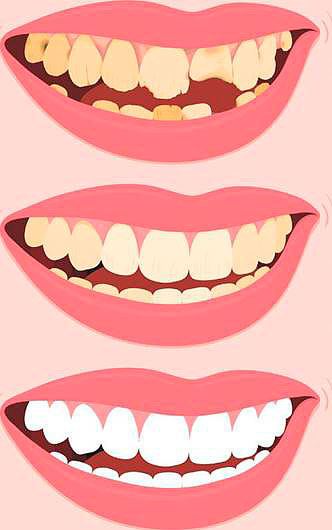 While restoring the lost hard tissues of teeth it is possible to achieve a high-quality result only in the case of harmonic composition of form, color and functional characteristics of the restoration [2, 4, 7, 8]. "Harmony" translated from Greek means integrity, coalescence, interaction of all parts and elements of the form, i.e. is regarded as esthetic category. Animated harmony, filled with the human essence and sense, is called beauty. A piece of sculpted clay becomes animated when a tender child's silhouette of courageous warrior's profile if formed out of it. It is the harmony of the form which plays the leading role in the connotation of beauty. The harmony of color seems to recede to background. One may ask: what is special in the piece of clay having the uniform structure and color. By what may it attract somebody's look? In which moment the clay becomes animated in our hands?
While restoring the lost hard tissues of teeth it is possible to achieve a high-quality result only in the case of harmonic composition of form, color and functional characteristics of the restoration [2, 4, 7, 8]. "Harmony" translated from Greek means integrity, coalescence, interaction of all parts and elements of the form, i.e. is regarded as esthetic category. Animated harmony, filled with the human essence and sense, is called beauty. A piece of sculpted clay becomes animated when a tender child's silhouette of courageous warrior's profile if formed out of it. It is the harmony of the form which plays the leading role in the connotation of beauty. The harmony of color seems to recede to background. One may ask: what is special in the piece of clay having the uniform structure and color. By what may it attract somebody's look? In which moment the clay becomes animated in our hands?
Certainly, at first one should define the overall dimensions of the object, then one should define priorities of the general to the particular, then one should draw the micro-relief of the surface. The more differentiated is the surface, the more we get reflection of light from it. The clay becomes animated when we finalize the process of surface differentiation. Reflections of color from multiple edges, intertwined, allow to see the beauty of the newly created object. The well-known Spanish architect of XIX century Antonio Gaudi used to say: "Color is the main architect".
Students of art graphics are taught such wisdoms of craftsmanship, but unfortunately the process of harmony restoration remains mystery for dentists. But in XXI century, possessing modern techniques, the members of professional dental community may allow themselves to create the harmony of teeth-jaw apparatus and to approach esthetic dentistry. The right to see, grasp and recreate the harmony of teeth and teeth rows at present have both dentists and their colleagues, dental technicians [4]. With this purpose dental restoration materials are being incessantly improved, and continuous training of students and doctors is being implemented.
It has been noted that the dimensions, form of teeth and their proportional relation in the teeth row are the main parameters in dentistry [2, 4, 7]. At the opinion of many authors, while performing esthetic restorations it is necessary to take into account (in descending order): form, transparency, intensity, pattern of surface, brightness of enamel, individual characteristics, shade [6]. Recreation of each parameter requires from dentists the knowledge of teeth anatomy, physical-mechanical properties of used material, optical qualities of hard tissues of the teeth, peculiarity of color perception by human sight [1, 2, 8].
The exact visual reproduction of restoration color is not an easy task. In order to facilitate the definition of color a variety of ready-made shades is offered to the practicing dentist. The shade selection depends on the dentist's ability to feel by which parameters differ the tooth color and the sample shades. The main criteria are brightness, intensity, tone.
Tone (as per Muncel) is the quality by which we may differentiate one color from the other. For example, red from yellow. Brightness is the lightness of the object: the darker is the tooth, the less brightness it has. Intensity is the concentration of particular tone. While selecting tooth color in practice the greatest importance has the difference in brightness (lightness), the lest importance has the difference in tone. Slight mismatch in tone is not so much noticeable as even minimal mismatch in brightness [1].
While selecting shade it is necessary to observe a number of important rules [6, 8]. Perception and analysis of color is the skill which may be developed and further improved in practice [1, 3, 5].
Purpose of Work
Improving teeth dental modeling education by forming the skill of analysis of color of restoration received from various combinations of dentin and enamel shades of nano-hybrid composite material "Estelux NC" (StomaDent, Russia).
Material and Methods
The color of restorations received on phantom teeth (incisor, fang) was determined and analyzed with the use of VITA System 3D-Master scale.
The technique comprised several stages
1. Defining brightness (lightness). The scale divides color etalons on 5 groups of brightness - from 1 to 5. The higher is the number, the darker is the color.
2. Defining intensity of color. Each group is divided in subgroups: M - medium shade, L - yellowish, R - reddish. Intensity has been defined by medium shade M in the selected group. All etalons in level M have the same color tone and the same lightness, but differ by intensity and have their number code.
3. Defining tone. In the same brightness subgroup upon necessity the shade is corrected, i.e. the code L or R is chosen (Figure 1).
Results and their discussion
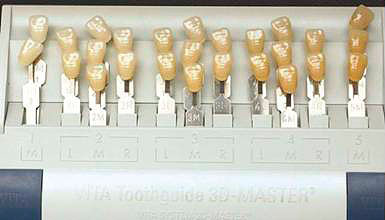 |
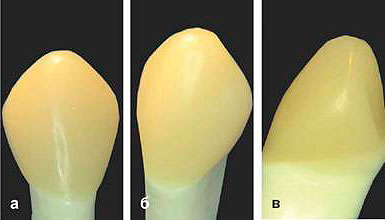 |
| Figure 1. VITA System 3D-Master Scale |
Figure 2. Fang: the stages of full crown restoration by the composite - shade DA3 (MONO) |
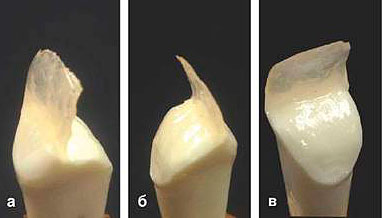 |
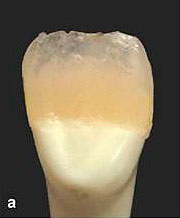 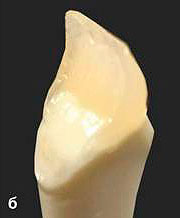 |
| Figure 3. Stages of creation of palatal wall by enamel shade ЕА3 of "Estelux NC" |
Figure 4. Adoption of dentin shade DA3,5 to enamel shade ЕА3 |
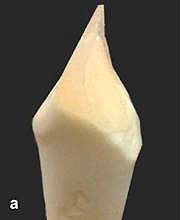 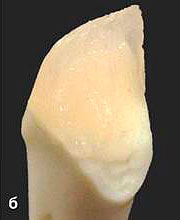 |
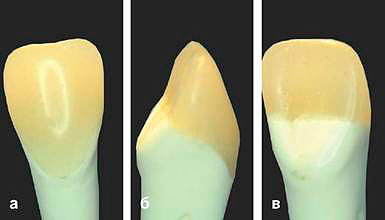 |
| Figure 5. Incisor: adoption of the composite shade DA3,5 to the dentin shade DA3 |
Figure 6. The final view of the restoration carried out with the use of shades EA3, DA3,5, DA3, EA3 |
Initially the phantom fang reconstruction with the use of only one dentin shade DA3 of nano-hybrid composite "Estelux NC" has been performed (Figure 2). The color of restoration was very close to the shade having 3M2 code. The form of the crown part of the tooth corresponds to the fang indeed, but the color is perceived as lifeless and does not bring esthetic satisfaction. The shade DA3 is intended for the restoration of "dentin mass" in the cervical area of the crown part of tooth and usually it is intended to cover it later with "enamel mass". However, there are patients having quite intensive yellowish color of the crown, lacking transparency zones, and the filling material of DA3 shade may be the only (the first and the last) if it suits the patient.
Depending on the wishes and possibilities of the patient and the doctor's skills the material may be utilized both in MONO method and in multi-layer restoration.
In order to study transparency, possible changes in brightness, intensity of the composite material "Estelux NC" we carried out full restoration of the crown part of the phantom tooth with the use of "silicon key" and multi-layer combination of various shades of enamel and dentin of the same width in all samples.
Stages of work with "Estelux NC" restoring crown part of tooth by multi-layer technique
1. Restoration of palatal wall with the use of "silicon key", EA3 layer (Figure 3). The width in the area of incise edge is 0,5 mm, in the area of cervix - 1,2 mm.
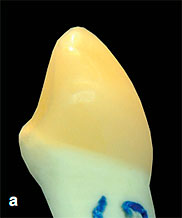 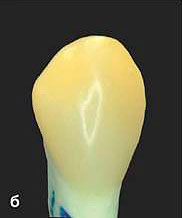 |
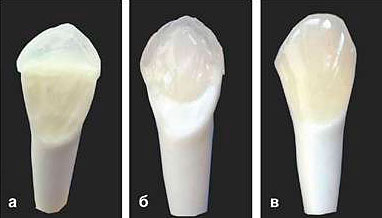 |
| Figure 7. The final view of restoration performed with the use of shades EA3, DA3, DA2, EA3 |
Figure 8: а) forming palatal wall with EA2 shade; б) adding dentin shade DA2; в) adding enamel shade EA2 |
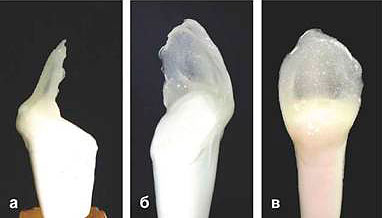 |
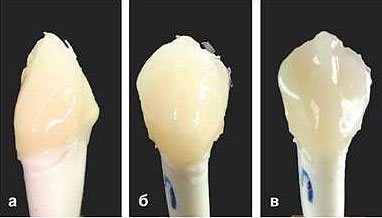 |
| Figure 9. Restoration of palatal wall by enamel shade EA2 of "Estelux NC": а), б) view from the contact surface; в) view from the palatal surface |
Figure 10. Multi-layer restoration of tooth: substituting the main dentin mass by shades DA3 and DA2 of "Estelux NC" |
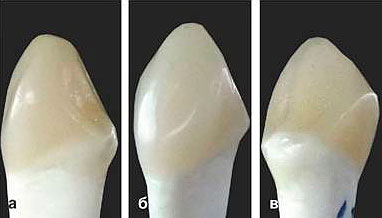 |
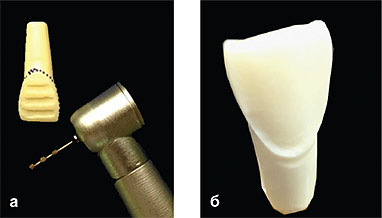 |
| Figure 11. The final result of multi-layer restoration of composite tooth with EA2, DA3, DA2, EA2 shades of "Estelux NC" |
Figure 12: а) the depth of preparation for veneer of phantom teeth by marking Bor; б) the prepared surface of phantom tooth for veneer |
2. Placing opaque intense dentin shade DA3,5 in the form of mamaloni having width in the area of tooth cervix 2,2. mm, in the area of tooth body - 1,5 mm. In the upper 1/3 of the crown this layer is absent (Figure 4). If this layer is increased, the restoration may look grayish.
3. Then we placed dentin shade DA3, repeating relief of the lower layer. The thickness in the area of tooth cervix is 0,4 mm, in the area of tooth body - 1,8 mm, gradually becoming thinner while moving to the incise edge (Figure 5). The internal layer, substituting dentin, provides intensity, matteness, fluorescence and tone (color) of future restoration, and also represents the main volume of placed material.
4. The last layer is enamel shade EA3 (Figure 6).
Restoration fulfilled by shades EA3, DA3,5, DA3, EA3, following VITA System 3D-Master Scale corresponded to the code 3R 2,5 (3 - brightness: the darkest of all variants of shade combinations, R - close to the Reddish shade, see Figure 6).
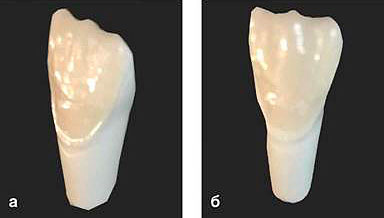 |
| Figure 13: а) dentin shade DA3 has been adopted to the surface of phantom tooth; б) layer DA2 has been placed, repeating relief created by DA3 layer |
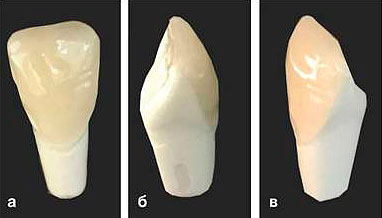 |
| Figure 14. The enamel EA2 layer has been placed: view from the vestibular (а) and contact surface of incisor (б), fang (в) |
Restoration performed by EA3, DA3, DA2, EA3 shades was given 2M 3 code (Figure 7), i.e. it was brighter than restoration made by shades EA3, DA3,5, DA3, EA3.
While making restoration of the crown part of fang by "Estelux NC" with the use of only two lighter shades (DUO) - enamel EA2 and dentin DA2 - the result achieved as per its brightness corresponded to group 2, medium shade with M code, intensity level 2 (2M2) in accordance with VITA 3D-Master scale (Figure 8).
Combination of three shades EA2, DA3, DA2 of multi-layer technique has allowed to receive restoration close also to 2M2 code of VITA 3D-Master scale (Figure 9-11).
In order to study the influence of thickness of filling material layer on brightness and intensity, on phantom teeth direct veneers of nano-composite "Estelux NC" have been made through multi-layer addition of material of various dentin and enamel shades:
1) DA3 + DA2 + EA2
2) MONO DA3
3) DUO DA3 + EA3
4) DA3,5 + DA3 + EA3
Thickness of layers has been controlled with micrometer. The measurement was made in the cervix area, in the middle area and in the incise edge area of tooth. Color was defined in the middle area, where insignificant thickness of enamel layer has been noted, with the use of VITA 3D-Master scale of shades.
Stages of work with "Estelux NC" material while making veneers
1. Phantom teeth (incisor and fang) have been prepared for veneer to even depth with the use of marking Bor (Fig.12).
2. After adhesive treatment the first composite layer has been laid - dentin shade DA3 with the simultaneous forming of mamaloni , then dentin shade DA2 (Fig. 13).
3. The enamel shade has been placed (see Fig. 3).
Dentin layer DA3 of nano-composite "Estelux NC", placed in the cervical area, and DA2 layer, complementing dentin up to ? volume, have served as the basis for restoration. The enamel EA2 layer, with minimal thickness in cervical area and maximal thickness in the incisor edge area, has modified the final color, added brightness, transparency. By this layer the relief of the tooth vestibular surface has been formed (Fig. 14).
The analysis of veneers, made by direct method out of nano-composite material "Estelux NC" with the use of various combinations of enamel and dentin shades, has shown that veneer looked brighter (lighter) when the shades DA3 + DA2 + EA2 have been used. It corresponded to the sample coded 1M2. More intensive color had veneer made of the combination of DA3,5, DA3, EA3 shades, code 3R (Table 1).
The veneer made of single shade (DA3) using MONO technique, looked less attractive. In this case the transparency of restoration was lacking. On the contrary, in samples having enamel shades, the transparency was very well seen. Excellent shine of the filling material after polishing has been noted.
Nano-hybrid structure of the filler provides for the strength of material. The degree of inorganic filler contained in the material is 82%. The advantage of such a high degree should be clinically important reduction of polymerization shrinkage of the composite and increase of strength of its surface. The introduction of anti-bacterial particles allow to prevent secondary caries.
Noting these characteristics, we have made crowns by indirect method for teeth 26 and 27 out of composite material "Estelux NC" arming the crowns with glass-fiber ribbon Glasspan. This method has been chosen as an alternative variant of restoration - temporary restoration for a long period.
Clinical case
Patient K, 51 years old, has applied to the dental clinic
Complaint: demolition of the crown part of tooth 26.
From medical history: tooth 26 had been covered by reconstructive crown.
Objectively: the crown part of tooth 26 was reconstructed by glass ionomer, after removal of old seal probe in mouth of root channels discovers no pain, percussion is painless, the tooth is motionless. At intraoral radiograph of tooth 26 discovers areas of destruction of osteal tissue in the region of the apex of cheek roots, the sight of root channels is contracted, intermittent, the radiographic shadow of filling material in the root channels cannot be seen.
While working with this material, one may note its good manipulative properties, ability to hold form, good adoption to hard tissues of tooth.
Table 1. Various variants of color combinations of veneers, made of "Estelux NC" shades by multi-layer method.
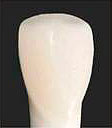 |
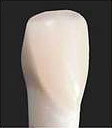 |
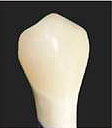 |
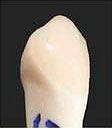 |
>Fig. 1 Incisor, DA3, DA2, ЕА2 shades
| Fig. 2 Incisor, DA3, DA2, ЕА2 shades |
Fig. 3 Fang, DA3, DA2, ЕА2 shades |
Fig. 4 Fang, DA3, DA2, ЕА2 shades |
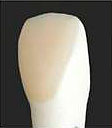 |
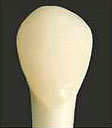 |
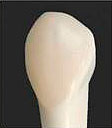 |
| Fig. 5 MONO incisor, DA3 shade |
Fig. 6 MONO fang DA3 shade |
Fig. 7 MONO fang DA3 shade |
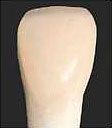 |
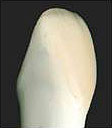 |
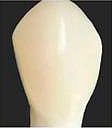 |
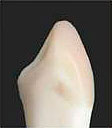 |
| Fig. 8 DUO incisor DA3 + EA3 shades |
Fig. 9 DUO incisor DA3 + EA3 shades |
Fig. 10 DUO fang DA3 + EA3 shades |
Fig. 11 DUO fang DA3 + EA3 shades |
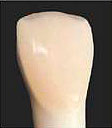 |
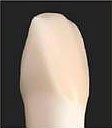 |
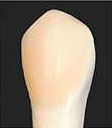 |
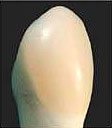 |
| Fig. 12 Incisor, DA3,5, DA3, EA3 shades |
Fig. 13 Incisor, DA3,5, DA3, EA3 shades |
Fig. 14 Incisor, DA3,5, DA3, EA3 shades |
Fig. 15 Incisor, DA3,5, DA3, EA3 shades |
Conclusion
Thus, knowing the algorithm of actions, the sequence of placing definite shades, by the specified thickness, one may create the anatomic form of the tooth crown with various degree of brightness, intensity, tone of nano-hybrid material "Estelux NC" ("StomaDent LLC").
Few master the art of color selection, but this art may be learnt and improved in further work. First steps, the basic knowledge of color choice is given at practical lessons. After graduation from college the graduate has the right to work on his own, without further obligatory education certificates. In this regard it is very important to improve the education process, setting the aim of intellectual, manual and esthetic education of student.
Table 2. Stages of preparation of teeth 26 and 27 for indirect restoration of the crown part by "Estelux NC" material
Joint work of producers, teachers, doctors may lead to the solution of acute issues in esthetic dentistry, including the issue of reconstructing natural harmonic beauty of teeth, teeth rows with the use of modern artificial materials.
BIBLIOGRAPHY
1. Гольдштейн Р. Эстетическая стоматология. - М.: STBOOK, 2003, 492 с.
2. Ломиашвили Л.М., Аюпова Л.Г., Михайловский С.Г. с соавт. Искусство моделирования и реставрации зубов. - Омск: Полиграф, 2014, 436 с.
3. Ломиашвили Л.М., Золотова Л.Ю., Золотов А.Н. Опыт использования интерактивных методов обучения на кафедре терапевтической стоматологии ОмГМА в рамках реализации ФГОС третьего поколения.//Профессиональная компетентность преподавателя медицинского вуза как условие повышения качества образования.//Сб. материалов Всероссийской научно-практич. конф. с междунар. участием. - Омск: ОГМУ, 2014, с. 168-172.
4. Ломиашвили Л.М., Седельников В.В., Постолаки А.И. От единства к многообразию форм в природе. - ДентАрт, 2015, № 178, с. 58-66.
5. Лопанова Е.В., Ломиашвили Л.М. Подготовка преподавателей мед. вуза к формированию коммуникативной компетентности врача-стоматолога. - Стоматология, 2015, № 5, с. 76-79.
6. Манаута Й., Салат А. Слои. Атлас послойных композитных реставраций. - М.: Азбука, 2014, 444 с.
7. Михайловский С.Г., Ломиашвили Л.М., Погадаев Д.В. Методоло- гич. подходы к процессу формирования у врачей-стоматологов навыков эстетич. моделирования в стоматологии. - Cathedra - Кафедра. Стоматологич. образование, 2015, № 52, с. 38-42.
8. Ряховский А.Н. Форма и цвет в эстетической стоматологии. - М.: Авантис, 2008, 208 с.





